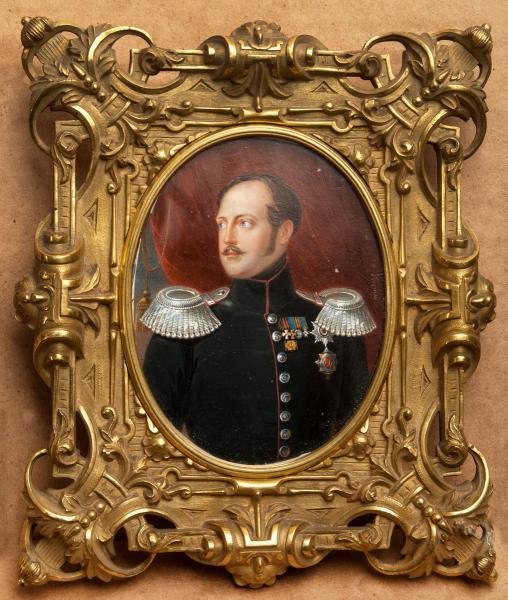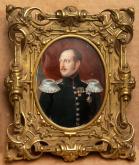Portrait of Emperor Nicholas I
Первая половина XIX века
- Слоновая кость, watercolours. 10,5 x 8 (овал)
- Ж-689
- Period Early 19th century
- CategoryPortrait
- Share
Emperor Nicholas I (1796–1855) was the third son of Emperor Paul I and Empress Marie Feodorovna. He ascended to the throne in 1825. The reign of Nicholas I is characterised by the centralisation of government and regulation in all areas of activity. In 1826, he created the Third Section of His Imperial Majesty’s Own Chancellery, which was tasked with monitoring the political reliability of subjects, and in 1827, he published a new censorship decree, which was called “cast iron” by his contemporaries. The foundation of his domestic policies was the principle of “autocracy, orthodoxy and nationality”. The sanctity of the autocracy also formed the basis for his foreign policy. In 1833, an agreement was reached between Russia, Austria and Prussia on reciprocal support in the case of a political crisis. This agreement is what led Nicholas I to send troops to help suppress the Hungarian Uprising (1848–1849). His assumption of the role of protector of Christian peoples under Muslim rule determined the direction of his Eastern foreign policy. The Russo-Turkish War (1828–1829) contributed to Greece gaining its independence (1830). The last years of Nicholas I’s reign were overshadowed by setbacks in the Crimean War (1853–1856). The character and activities of the Emperor caused contradictory assessments among his contemporaries, from enthusiastic veneration (“The Knight of Autocracy”) to definitive opposition (“The Gendarme of Europe”).

